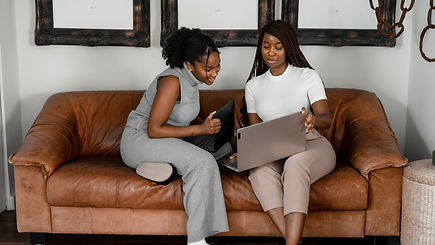
The project
As internet and social media users, we have all been through this situation. No matter how old we are or our level of education, we are all at risk to stumble across misleading or fabricated content as we scroll down our newsfeed, more often than not when and where we are the least capable of questioning them. We can choose to let it slide, not interact... but sometimes, the same problematic piece of information comes back further down, posted by a different account. It is still incorrect, incomplete or flat out fake! But its presentation and its repetition strengthen its credibility, and facilitate us believing in it.
ORIGINS
This boomerang effect is where our project gets its name from: Boomering! Not only that, but it undermines the first principles of doing online research as they are currently taught in school: checking and crossing sources. Faced with information disorders, these reflexes are far from being useless. However, they are becoming insufficient. Our team of experts from Spain, Italy, Slovenia and France under the coordination of the Udaf 82 (FR) have worked to identify and provide tools to work on this little extra thing to tackle false information and exercise critical thinking.
Why do we need
to tackle false information?
What harm is there in believing false information?
Some fake news and conspiracy can be entertaining, like those invented as parodies. But others are more dangerous have consequences on our peace of mind, personal balance and our informed participation in civic life. They have as much impact on digital spaces as on the physical world, as some people tend to isolate themselves, to the extend of contributing to hate speech and violence.
Young people aged between 12 to 19 years old* are among the most at risk of being exposed and the most vulnerable.
For one, 95% of the 16-25 year-olds use internet everyday, against 80% of the rest of the adult population.
Moreover, they may have less experience in distinguishing reliable sources of information and more problematic ones. It is possible that they come to trust a more accessible and relatable content creator to traditional news outlets. However, we have seen many older adults express their doubts against medical sciences during the Covid-19 pandemic, hinting that all demographics are at risk.
OBJECTIVES
There are serious grounds to worry yes, but it also means there is room for work!
The Boomering project is not a fact-checking or debunking initiative. We are not looking to demonstrate that this theory is wrong or that this article omits important details. We have used our professional skills and areas of expertise as pedagogues, teachers, social workers and mental health professionals to create a pedagogical toolkit that can help young people, professionals and volunteers, parents and any other adult in their lives, to exercise their critical thinking skills and gain media, information and digital literacy.
Critical thinking and media literacy are important skills in our modern society, caracterised by globalisation, hyperconnection, fragmentation and fast changes. It is crucial to become aware of what they have to offer alongside traditional school teaching, in order to lead a confident and safe life in the information world.
The tools
We have developed tools that, used together, provide quality and in-depth support to learn more on disinformation, strengthen one's skills and critical thinking, and also connect users with reliable sources of information and support in their local or national environment.
STORYMAPS
This tool was built to collect teenagers' and adults' lived experienced of false information. Its three chapters present the most prevalent themes cluttered by fake news in the four studied european countries. It is built for educators and researchers looking to further their knowledge on these questions.
PAREIDOLIA
PAREIDOLIA seeks to encourage young people to talk about the diversity of their opinions and perceptions when interpreting images found online. We have prepared a full collection of ambiguous pictures to use during workshops or informal conversations, to learn about the role of images in disinformation.
TALOS
This tool is a chatbot users can discuss false information with and find answers to their questions on health, environment, politics, etc. They can also be redirected towards expert organisations that can inform them or provide them with personalised, free support. It is free, anonymous and safe to use.
* Young people and teenagers according to the WHO are individuals aged between 10 to 19 years old. The BOOMERING project is one of the ERASMUS+ social inclusion project and strives to promote and support the fight against radicalisation, as well as to defend democratic values through education. BO ERI N°47 (19/12/2019)
